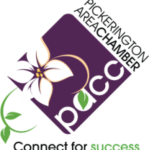Have you ever hesitated to start something beneficial for yourself, only to realize, once you did, that it was a game-changer and wondered why you didn’t start sooner?
That was my journey with meditation. Despite understanding that just five minutes a day could usher me into a calmer, less stressed, and more present state, I’d find every excuse to skip it for years.
I’d convince myself that five minutes was too insignificant; I needed at least thirty, which I never seemed to have, so why even bother?
Then there was the classic, “I’m too jittery to sit still” – oh, the irony, knowing full well that meditation was the key to soothing my nerves.
And let’s not forget the all-too-common environment blame game – too many distractions, despite knowing that meditation strengthens focus and helps manage those very distractions.
My favorite excuse? “It just doesn’t work for me.”
Naturally, it didn’t ‘work’ – my sporadic attempts were no match for my impatient and bustling mind. I was like someone waiting for water to boil without ever turning on the heat, all the while expecting a perfect, tranquil mind as a sign of ‘success.’
But then, a lightbulb moment! I realized meditation isn’t one-size-fits-all. There are different ways to meditate, each adaptable to my unique schedule, mood, and needs. The real win was simply showing up, tuning into my inner life, and learning to observe my thoughts without getting attached.
I embraced the chaos of the mind; perfect mental clarity wasn’t the goal. Instead, it was about finding a sense of inner peace amidst the noise, understanding that this practice, with all its mind wandering and messiness, was my path to greater clarity in everyday life.
And the benefits? They’re not just mental. Regular meditation practice – even just a few minutes daily – can enhance your sleep, mood, resilience, and even your physical health. It’s a powerhouse habit that positively influences every facet of life, reducing anxiety, depression, and stress while boosting focus, presence, and overall well-being.
Imagine transforming every aspect of your life, from work to relationships to hobbies, all with a simple, consistent practice. Whether you’re new to the world of meditation or looking for fresh ways to weave mindfulness into your routine, I can’t wait to share some of my go-to techniques with you.
8 Quick & Easy Meditations
Now that you’re familiar with the profound impact a few minutes of meditation can have, let’s dive into some simple yet effective techniques that you can start incorporating into your daily routine today.
Nadi Shodhana or Alternate Nostril Breathing
Start this simple yet profound practice by comfortably positioning yourself in a peaceful place. Gently press your left thumb against your left nostril, effectively closing it, and take a deep, mindful breath through your right nostril. This act of mindful breathing is the essence of beginning a meditation session.
Then, with a gentle touch, use your left index finger to close your right nostril, ensuring both are briefly sealed to hold the breath. This brief pause allows you to focus inward, a fundamental aspect of insight meditation and mindfulness practice. As you release your left nostril, exhale slowly, feeling the stress leave your body.

Now, inhale deeply through the now-open left nostril, maintaining a steady, relaxed pace of breathing, vital for a successful body scan meditation or any type of meditation. Close it off with your thumb, holding your breath for a moment, fostering a sense of calm and preparing your body and mind for the next cycle.
As you lift your finger to exhale from the right nostril, visualize the release of negative emotions and embrace a refreshed sense of inner peace. This process isn’t just a physical exercise but a form of mantra meditation, where your breath serves as the mantra, guiding your focus and intention.
Complete a minimum of five sets of this balanced breath technique. This not only harmonizes the left and right hemispheres of your brain, promoting brain activity conducive to meditation but also calms the nervous system. Regular practice of this technique can lead to a lower stress level, reduced blood pressure, and an overall sense of well-being, making it a great way to integrate meditation into your daily routine.
2. Mindful Breath Counting Exercise
As you settle in, initiate mindful breathing through your nostrils, engaging in a simple practice of counting which serves as a point of focus, helping to anchor your mind. With each inhale, silently say “and,” and with each exhale, count sequentially—inhale “and,” exhale “one”; inhale “and,” exhale “two.” This technique, a form of brief meditation, is a great way to start for beginners.
As you continue, be mindful of the rise and fall of your belly with each breath, embodying the principles of mindful eating by being fully present with each sensation. Allow the rhythm of your breaths to guide you deeper into relaxation, slowing your heart rate and nurturing a sense of calm. [Meditation Can Help With Anxiety]
Progress through your breaths until you reach the count of 100. This practice isn’t just a physical exercise; it’s a form of regular meditation practice that, over time, can lead to profound health benefits and a sense of inner peace.
Once you complete the count, gently open your eyes and reacquaint yourself with your surroundings. Wiggle your fingers and toes, bringing a gentle movement back into your body. Conclude this simple exercise by bowing your head slightly, embracing a moment of gratitude for the positive emotions and clarity this period of meditation has brought into your daily life.
3. Progressive Muscle Relaxation Breath Scan
Begin this healing practice by finding a comfortable position. Close your eyes and focus on taking a deep breath in through your nostrils, expanding your belly to the count of five. Imagine a wave of relaxation starting at your feet, a sensation similar to the calming effect of meditation music or the gentle ebb of ocean waves.
As you inhale, envision a warm, soothing light filling the area of focus, starting with your feet. Then, exhale slowly through your mouth to the count of five, picturing any stress or tension melting away from that part of your body. This process is akin to a loving-kindness meditation, where you’re sending healing and positive thoughts to each part of yourself.
Continue this mindful breathing and visualization with each area of your body: your ankles, shins, knees, and so forth, moving upward until you reach the top of your head. With each breath, engage in a simple practice of awareness, noting how each part of your body feels and responding with gentle, healing breaths.
As you complete this full-body scan, which acts as a comprehensive exercise to promote relaxation and well-being, take a moment to acknowledge the health benefits of this regular practice. Reflect on the decreased blood pressure, the improved nervous system function, and the overall sense of calm you’ve cultivated.
Finish your session with a moment of silent gratitude, recognizing the positive emotions and sense of inner peace this breath scan has brought you. This acknowledgment is an important step, similar to the conclusion of a yoga session, where recognition of the body’s and mind’s experiences is key to a holistic practice.
4. Gentle Lip Touch Relaxation Technique
In moments of stress, our sympathetic nervous system often kicks into high gear, triggering that all-too-familiar “fight-or-flight” response, a stark reminder of the urgent need for mindfulness in our busy days. Conversely, the parasympathetic nervous system, when activated, brings about a welcome relaxation response, easing us into a state of calm and tranquility.
In “Buddha’s Brain,” Rick Hanson discusses several comprehensive exercises to engage the parasympathetic nervous system, with one of the simplest being the gentle lip touch technique. This method draws on the fact that our lips are rich with parasympathetic fibers, making this a simple meditation exercise you can perform anywhere, whether you’re seated at your desk or taking a mindful walk.
To practice this technique, lightly press two fingers against your lips. This simple word of action, “I am safe,” paired with deep breaths, can significantly shift your internal state. As you touch your lips and breathe slowly, remind yourself of your safety, encouraging a relaxation response that permeates your entire body.
This practice is not just a quick fix but can be part of a longer-term strategy for managing stress. It’s a perfect example of how a little bit of mindfulness can go a long way in altering our physical and mental state, serving as a testament to the powerful benefits of meditation and deep breathing in fostering a sense of calm and well-being.





